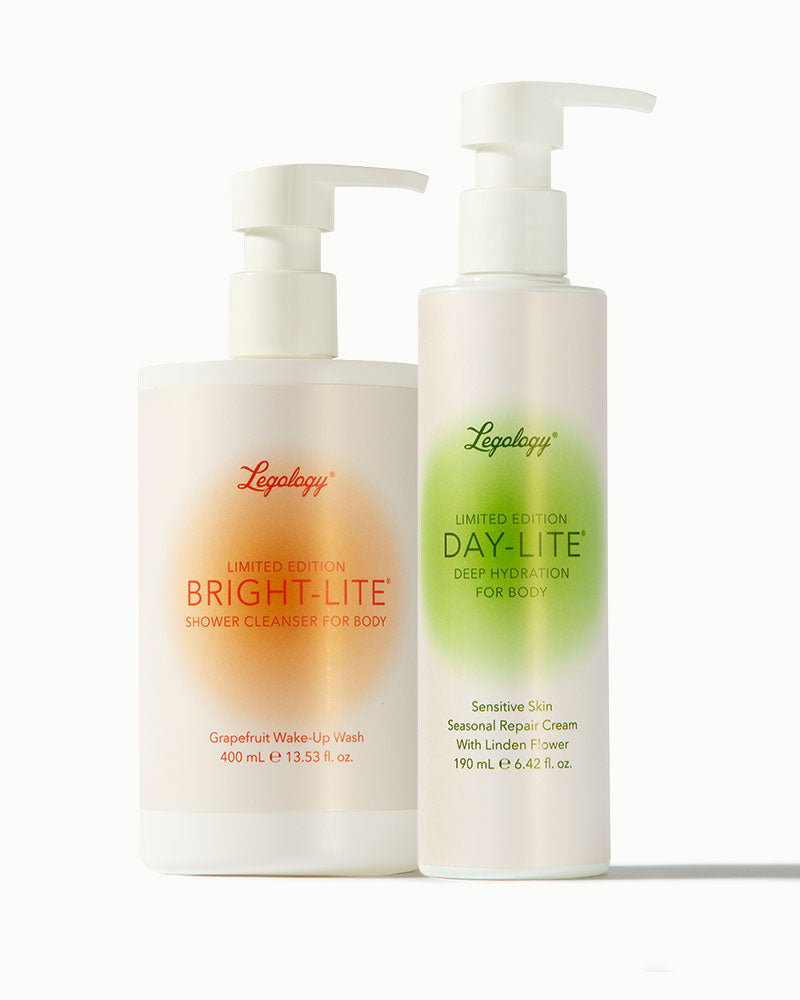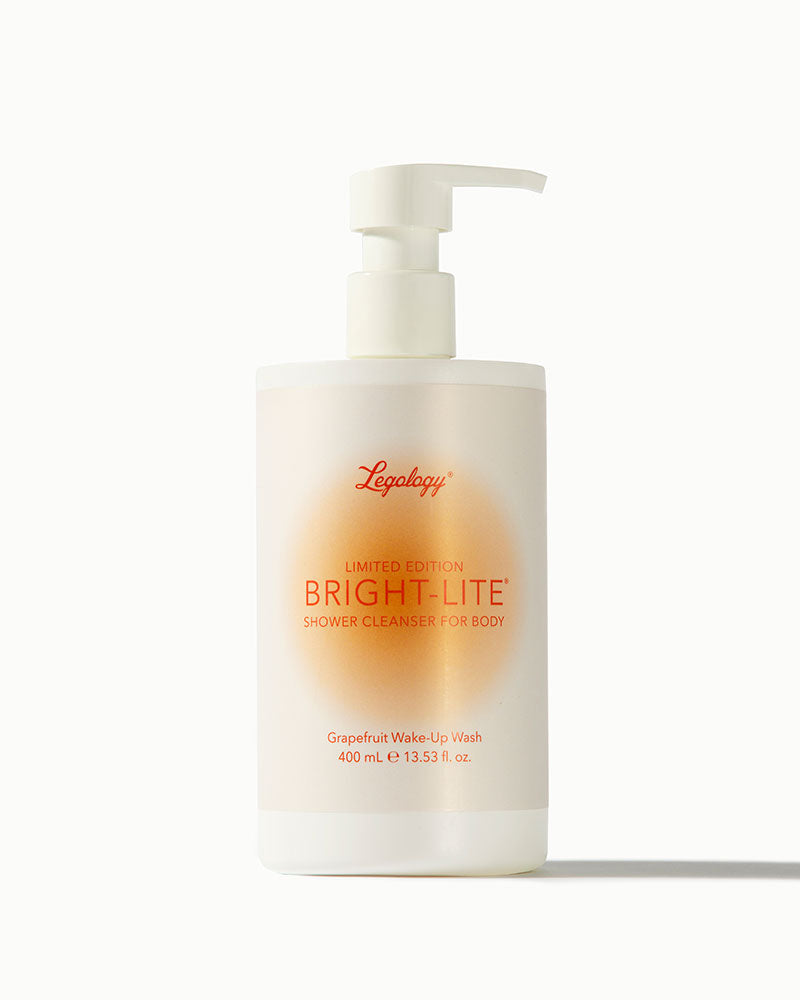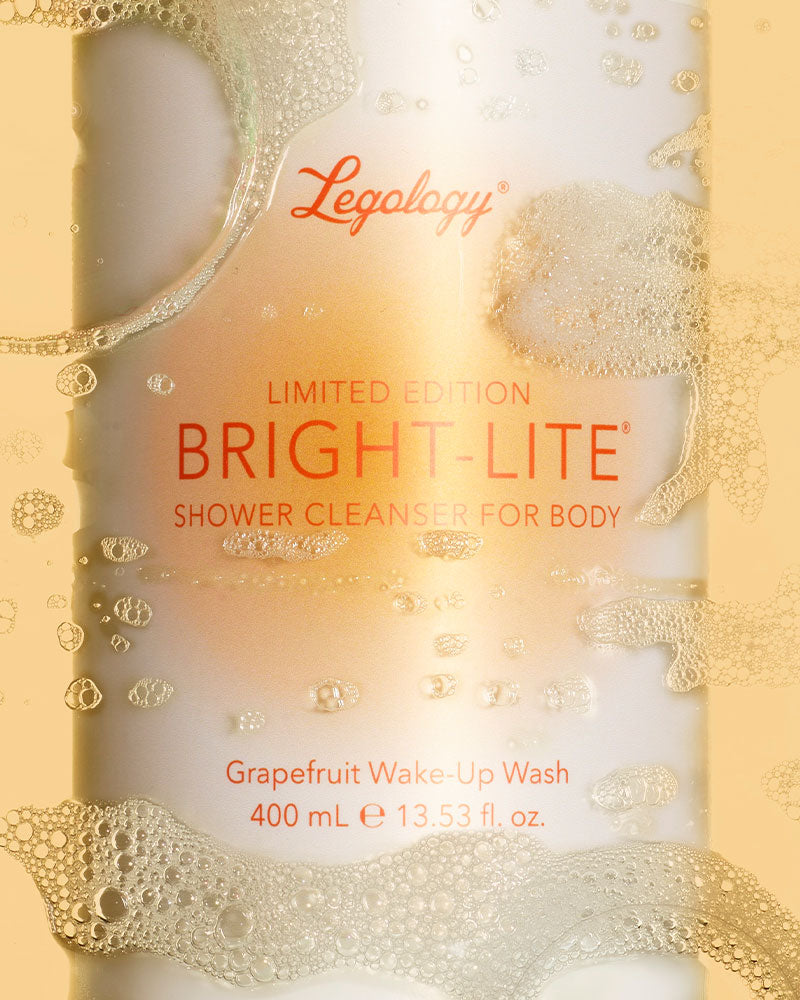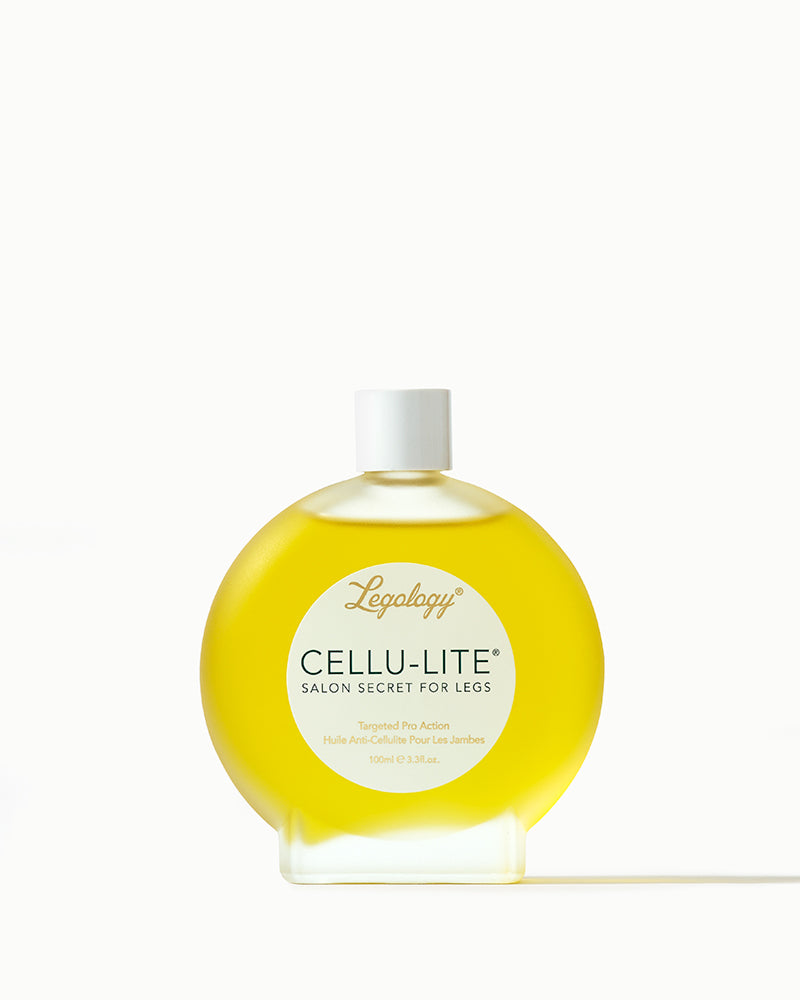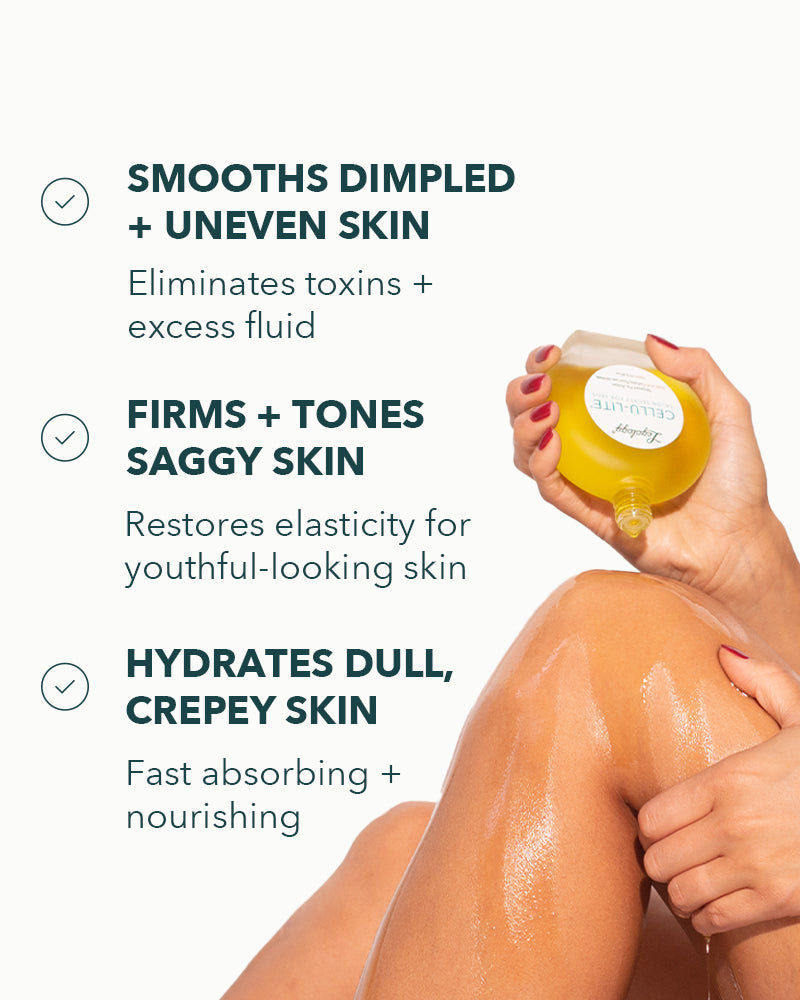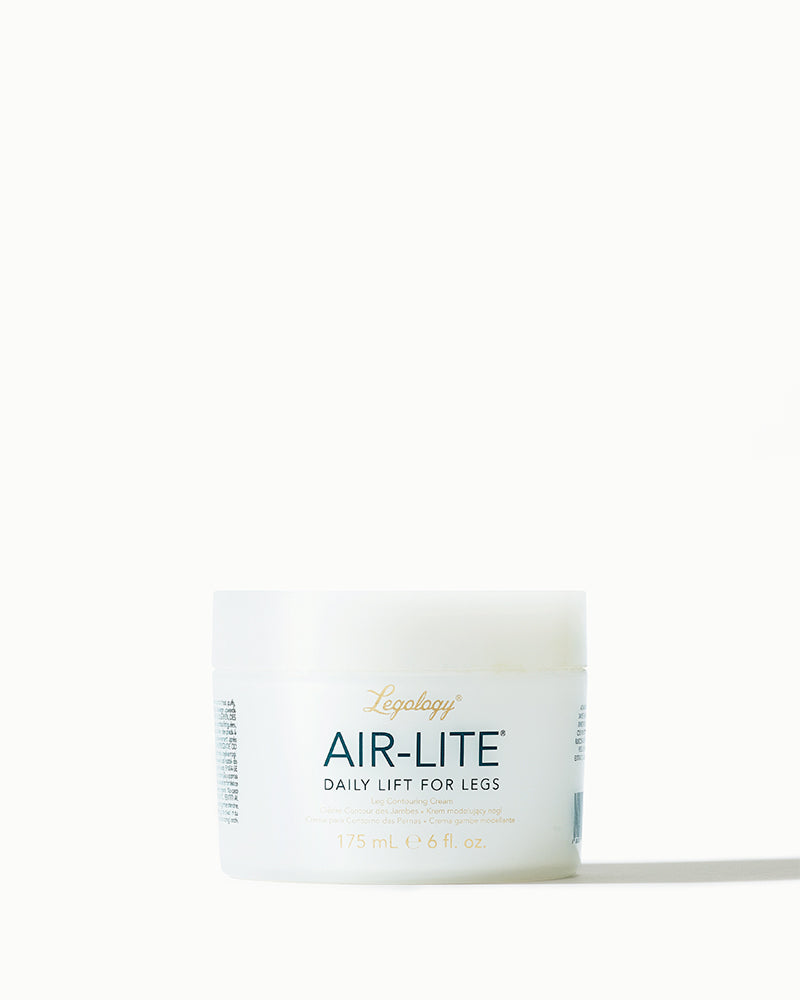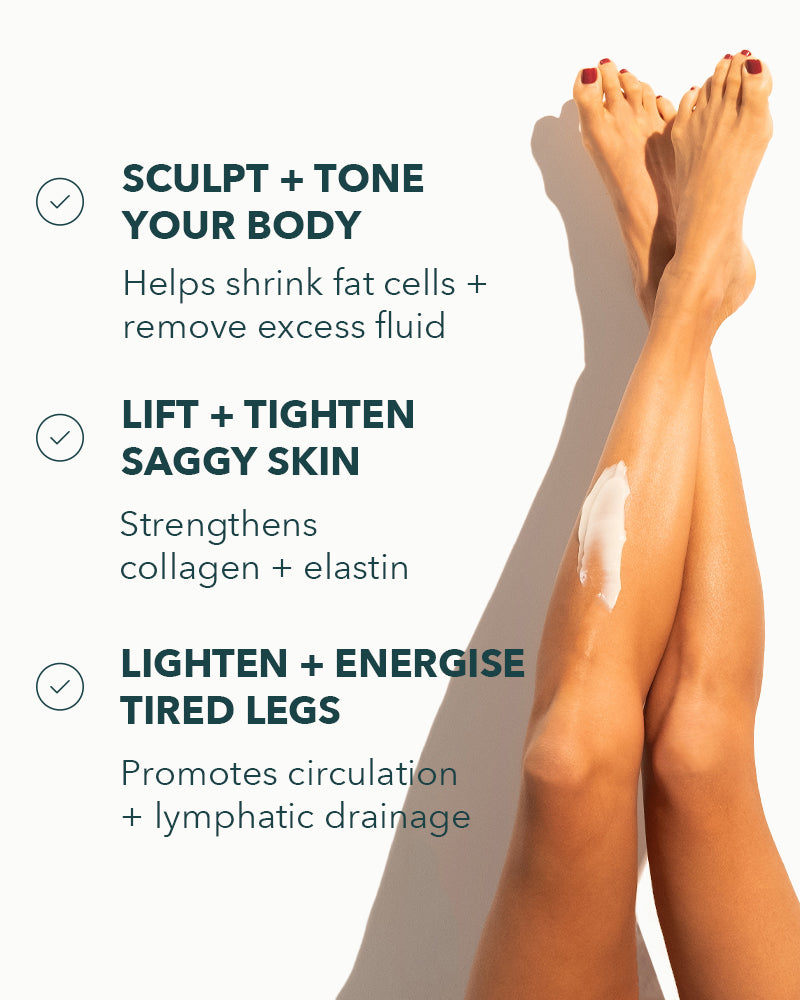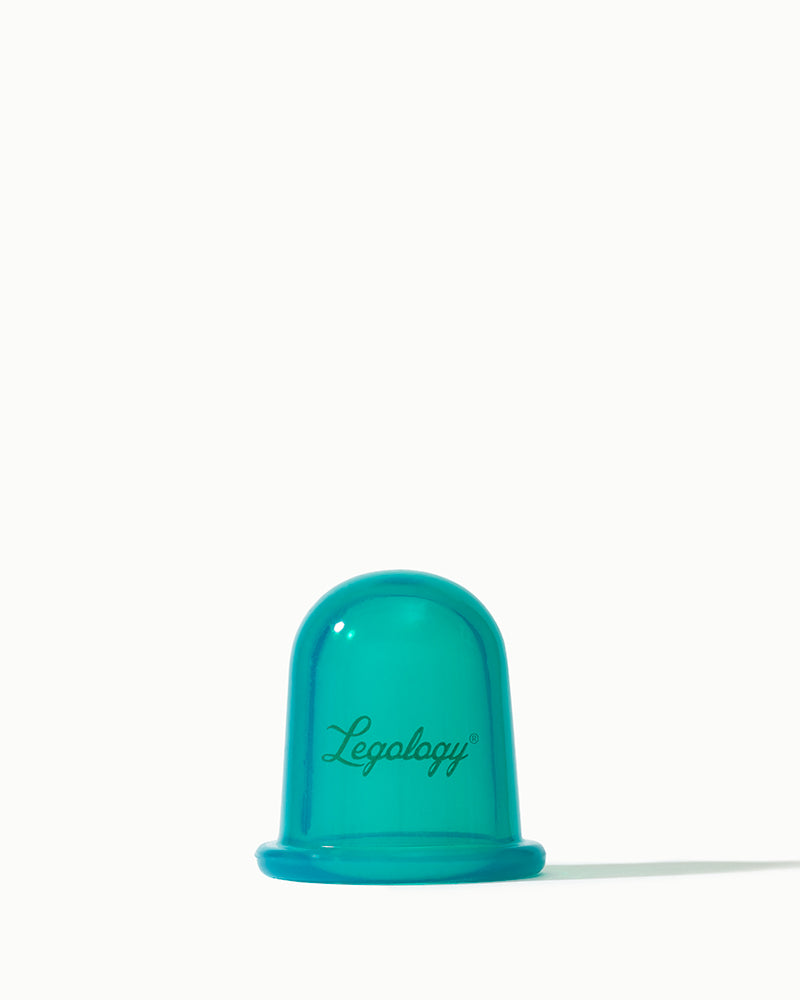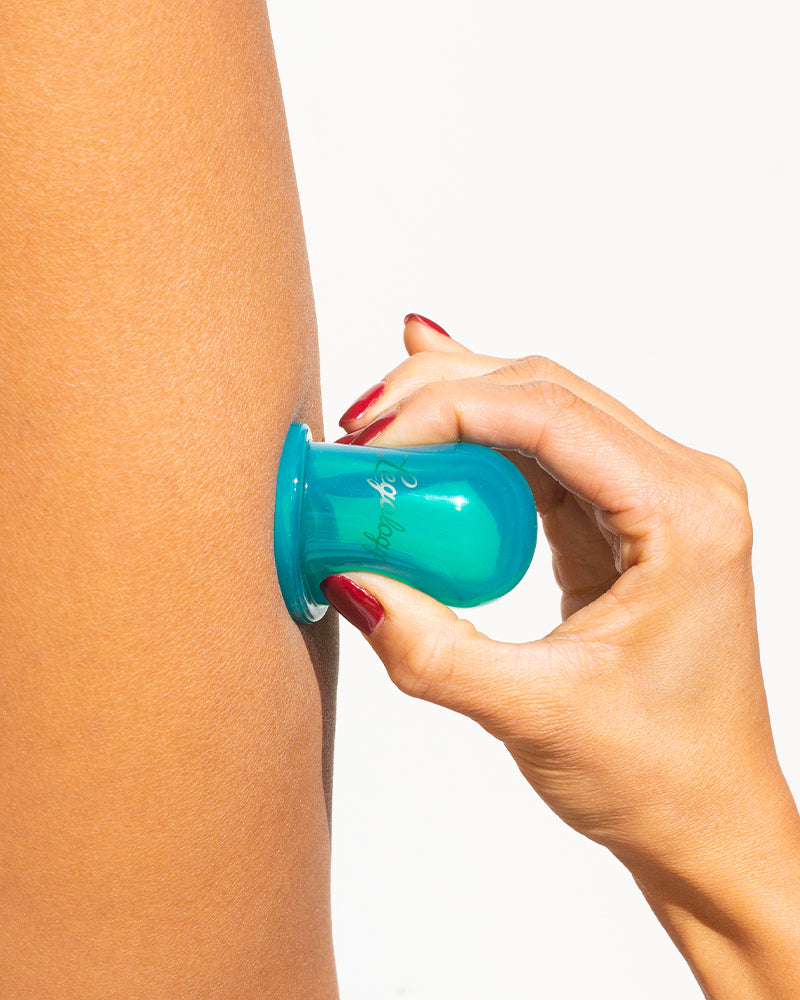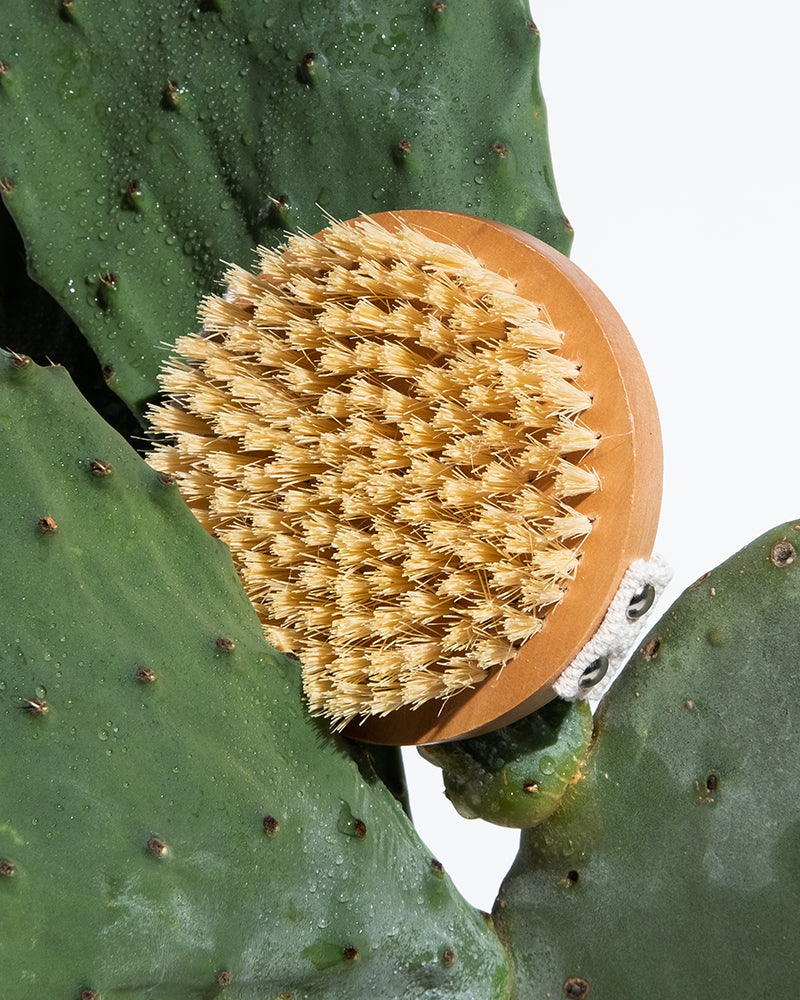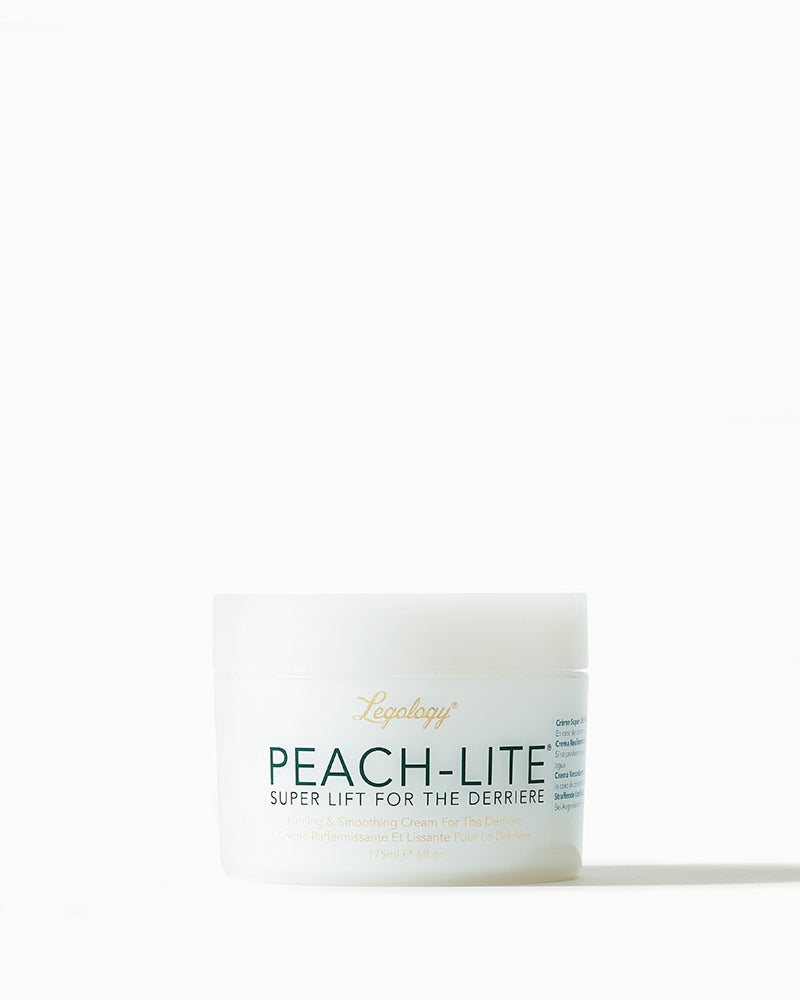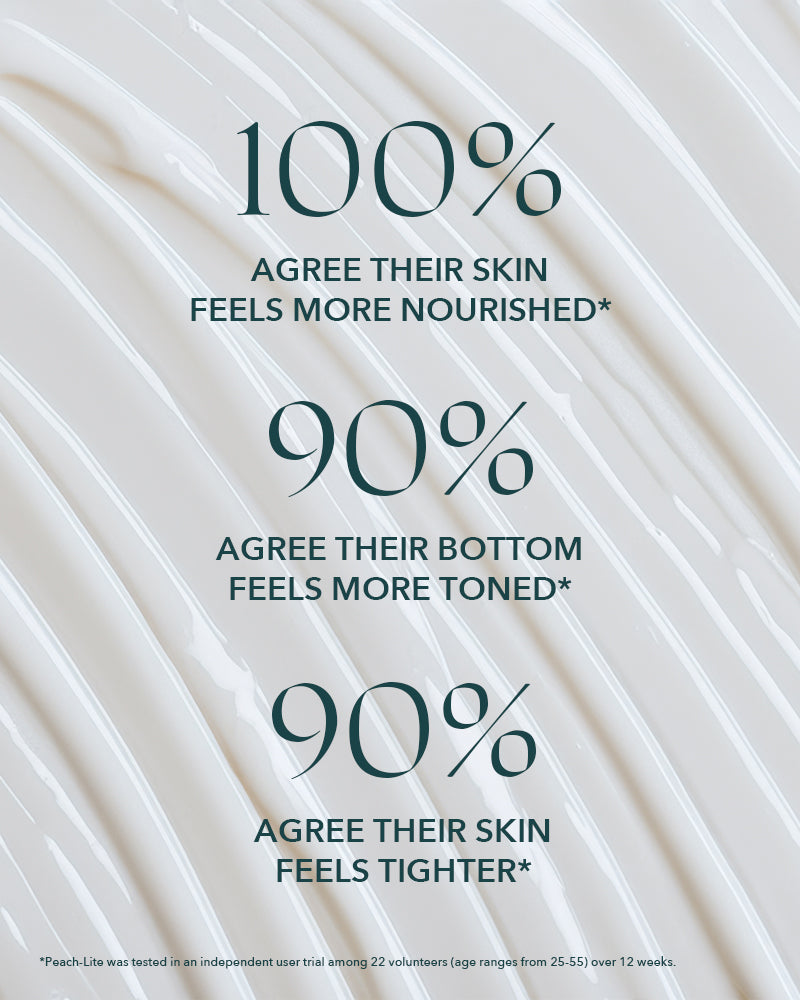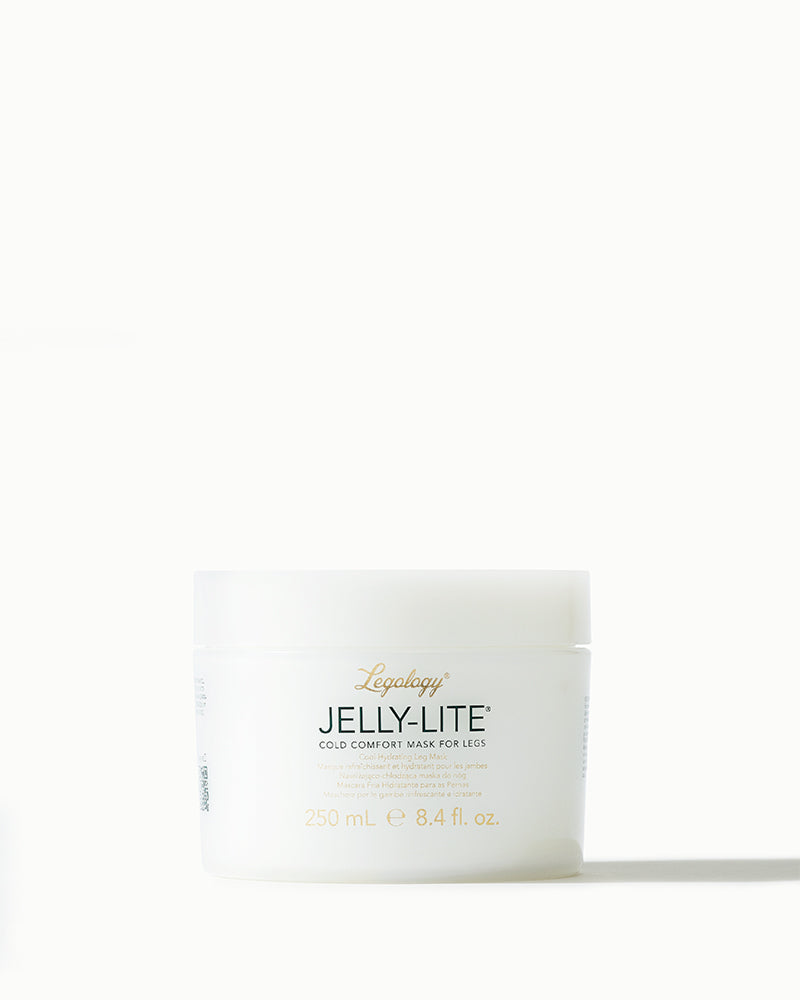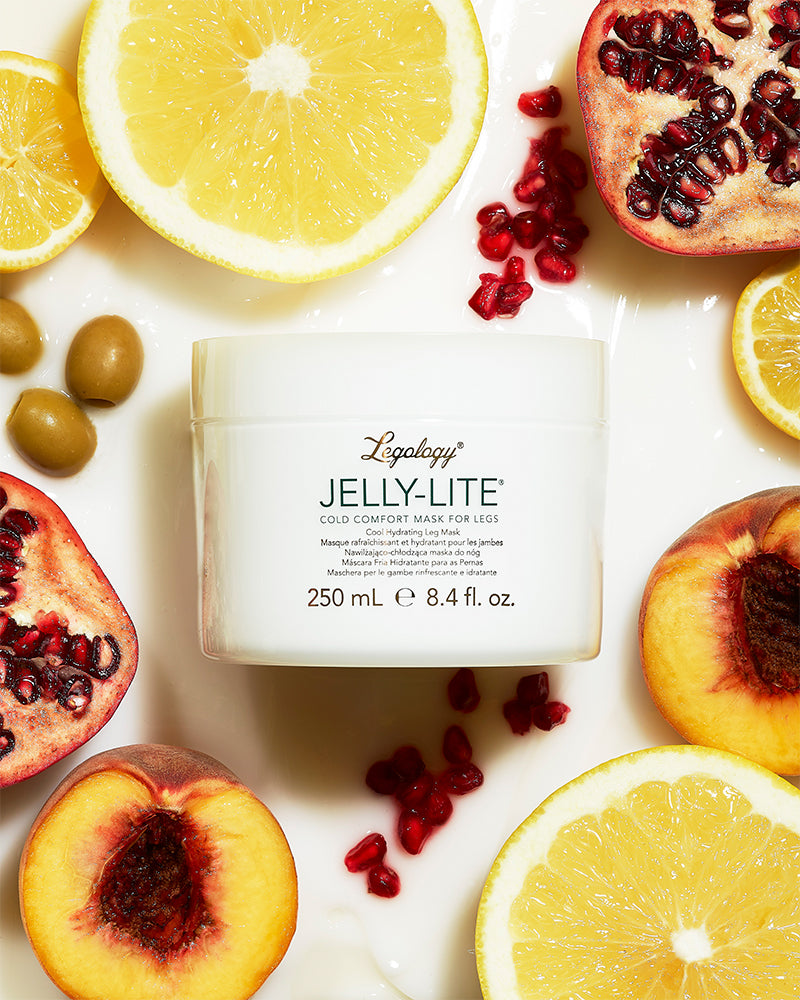Top Vascular Surgeon Speaks The Truth On Varicose Veins

Recently I went to talk to the long haul cabin crew at British Airways about leg care – few legs work harder than those belonging to the air stewardesses who regularly walk across continents and oceans, albeit in the air – and the big question of the day was what the best treatment is for varicose and thread veins.
There is some debate over this among vascular surgeons where varicose veins go, but the expert whose opinion I value most is Professor Mark Whiteley, a man who is so passionate about removing them permanently – far from the case up till now – that he developed his own protocol. He is a warrior in his field and I’ve lost count of the number of friends and acquaintances that I’ve referred to Professor Mark over the years for successful treatment. To get permanent results he maintains that the most important bit is the starting point – an accurate diagnosis: in other words you need ultrasound to see why the veins have developed in the first place.
Treatment has moved on from ‘stripping’ – thankfully, since the mere thought of this makes one wince and it doesn’t work. Of the more modern treatments, he is a fan of Endovenous Laser Therapy (ELT), a versatile, minimally invasive ultrasound-guided technique; he is also impressed with Clarivein, which uses a mechanical device to get the chemical (sclerotherapy) deep into the vein wall to ensure the vein is removed permanently, without the need for anaesthetic.
The best treatment for thread veins, meanwhile, is targeted laser treatment, which breaks them down and removes them; and the side-effects – a bit of bruising and swelling – usually disappear within days.
Still, many of us remain wary about vascular surgery – worrying that veins will return after surgery, that surgery will be painful and recuperation takes a long time. So I talked to Professor Mark about the most common misconceptions around vascular health and corrective surgery. His responses are below, so if you are concerned about varicose or other veins, do have a read (perhaps bit by bit over a few days – it’s long!) I think you’ll find it illuminating and reassuring.
1 in 2 of us have problems with leg veins, but I’ve read that only people who are overweight have varicose veins? Can this be true? Or are there different contributory causes, ie genetic, hormonal and smoking?
“Being overweight is a common misconception. It stems from the idea that there is ‘pressure’ pushing down on the veins from above causing varicose veins. Research that we performed in 2001, confirmed elsewhere, and outlined in my book Understanding Venous Reflux – The Cause Of Varicose Veins & Venous Leg Ulcers shows that varicose veins start low in the leg. The first veins to lose their valves are usually just below the knee. Then over the years they work their way up the leg until the last valve gives way in the groin. The problem is that when varicose veins were first thought to be due to valve failure by Trendelenburg in in the 1890’s he made the diagnosis by post-mortem dissection. Therefore when he saw the valves not working all the way down the vein, he assumed it came from pressure from above. This is why he invented the ‘Trendelenburg tie’ which became the tying in the tying and stripping operation.
There is no direct association between weight and getting varicose veins. However, there is an association between being overweight and having complications from varicose veins.
The reason for this appears to be that people who exercise more, keep the blood circulating through the veins and therefore get fewer complications. A lot of the problems with varicose veins is due to the blood becoming ‘static’ within the varicose veins and not moving much. This causes inflammation. Obviously the more active you are, the less likely you are to be overweight. The more inactive you are, the more likely you are to be overweight. Therefore being overweight or not is an indication of your activity. Your activity is an indication as to whether you are likely to get complications from your varicose veins. Whether you get varicose veins or not also comes down to who your parents are. If they have varicose veins, you are far more likely to. There are no strong associations at all with hormones or smoking”.
Do women get issues with varicose veins more than men? Do they tend to develop varicose and spider veins for different reasons to men, ie pregnancy?
"This again is a myth about varicose veins. Women are generally more health-conscious and therefore are more likely to go to the doctor. In addition, fashion dictates that they are more likely to show their legs. I think that this is less important than the fact they are just more health-conscious.
A research project by Cathy Evans and Prof CV Ruckley from Edinburgh showed that when you stop people in the street and just examine them with ultrasound, men have varicose veins just as commonly as women. In fact in their study, men had varicose vein slightly more often than women!
In the Edinburgh vein study, one of the biggest ever studies on thread veins, (medically called telangiectasia and often also called ‘spider veins’ or ‘broken veins’) 86% of women had leg thread veins and 79% of men. So although there does seem to be a slight increased risk of women getting the thread veins, it is only a very minor difference between the two.
Early in my research into pelvic congestion syndrome and pelvic veins causing leg varicose veins, we found that one in six women with leg varicose veins have them because they have pelvic congestion syndrome (i.e. pelvic varicose veins). We found that only one in 30 men had this same problem. However the reason for this is because there are four veins in the pelvis that can cause pelvic varicose veins. In the woman, all four are hidden inside and therefore do not get diagnosed until patients seek out an expert such as ourselves. On the other hand, in men, two of the veins have their lower end in the scrotum and get diagnosed early in life as ‘varicocele’ – varicose veins in the scrotum around the testicle. This can be seen without special tests and is often seen and treated when the boy is a teenager or in their early 20’s. This accounts for the difference between men and women.”

Can having hot baths and crossing your legs cause varicose veins? Logic tells me this can’t be, but maybe there is some truth in it.
“There is absolutely no proof for this at all. The public love to have a simple answer for everything they see. However, medical science tells us that simple associations are rarely the case.
Hot baths cause all veins to dilate. Normal veins then constrict back as normal. If you have already got varicose veins or thread veins, they will look worse after a hot bath and will still be there afterwards. If hot baths really did cause varicose veins or thread veins, then you would always have thread veins and varicose veins equally distributed over both legs . This is rarely the case.
Crossing your legs being bad for leg veins comes from the old hospital idea that patients got deep-vein thrombosis if they crossed their legs when sitting on hospital beds. Nurses used to go around telling patients not to cross their legs as it was ‘bad for the veins’. What the nurses and doctors meant was that they used to think that pressure on the calves would cause clots in the veins called deep-vein thrombosis. But then patients would go home and think that if it was ‘bad for their veins’ then that might be something to do with varicose veins or thread veins. It is just one of those mixed messages that has no basis in truth but so many people have repeated it, it seems to have become accepted as an old wives tale.”
Is having varicose veins treated painful, expensive and time consuming .. I think this is what puts a lot of women off.
“This used to be true, along with the two other things that are often said that ‘veins always come back’ and they are ‘only cosmetic’. As such, many men and women avoid getting vein treatments only to regret it later in their lives.
To address these different parts in turn:
Is treatment painful? It’s impossible to effectively destroy veins and prevent them coming back with absolutely no pain whatsoever. However, before 1999 we used to tie veins and then strip them out which was exceptionally painful. This has been replaced since 1999 by endovenous surgery. Over the years, we have perfected this so that it is becoming less and less painful. Our research shows that it is approximately 1/10 of the pain of stripping. Patients can drive the following day (some drive the same day), whearas after stripping they are not meant to drive for at least 14 days and nights.
So although it’s impossible to get rid of all pain, we have minimised it as much as possible. There are some new technique such as the new HIFU (Echotherapy non-invasive treatment using Sonovein) that look as if they will be even less painful. Our early patients are walking home without even having to wear support stockings. However, as we are destroying vein deep in the body, I am sure that some people will get tender lumps for a few weeks afterwards. If they don’t, it is unlikely we have completely destroyed the veins!
Is treatment expensive? This really depends upon how severe your veins are and what pattern you have. Some patients have very simple patterns and only require simple treatments. Other patients, particularly if they have had inadequate surgery elsewhere, or if they have pelvic veins that need treatment, need complex treatments including pelvic coil embolisation with platinum coils as well as leg treatments. The more complex the procedure, the more equipment and time is needed and the more expensive the procedure becomes. However, more than anywhere else in life, you get what you pay for.
What you pay for in vein surgery is the equipment used, the expertise available and the time taken for investigation and treatments. To make vein treatments cheaper, you can use cheap duplex ultrasound scanners, and let the doctor do their own scan rather than get an expert vascular technologist. This saves money but also means that you are likely to get the wrong diagnosis and therefore wrong treatment. Hence your risk of getting veins back again in the future shoots up. Moreover, when it comes to treatment, to keep things cheap many doctors use standard radiofrequency or older lasers that keep prices down, and also only treat the main veins and not the complex one such as perforators. Once again this is much cheaper and quicker but leads to a very much higher risk of recurrence and needing treatment again in the future. At The Whiteley Clinic we have shown we can reduce recurrence rates to the same as if patients had never had veins treated before – so 3-4% per year. However, doctors and clinics cutting corners such as above and not diagnosing pelvic vein reflux and not treating perforators, and trying to do everything in one go rather than a sequential program tend have recurrence rates nearer 30-40% per year. In order for patients to monitor this, we have set up the College of Phlebology International Venous Registry. Doctors and clinics with nothing to hide and who are open about their results are joining this. Those that are worried that they will be exposed as having high recurrence rates after not doing so. Within a few years, patients will be able to go to this registry to ensure that the doctors they are seeing have the lowest possible recurrence rates.
Is treatment time-consuming? Once again this largely depends on how complex the vein problem is as every patient now has individualised treatment plans. However, the one inescapable truth is that if we are talking about thread veins on the surface, then you only get a good cosmetic result when healing is complete. Just the same as any wound on the surface, a dying vein is not going to start looking like it is improving cosmetically for 8 to 12 weeks after treatment and does not show excellent improvement until 1 to 2 years after treatment. This is just the same as an appendix wound, gallbladder wound or any other scar on the surface. Anyone promising quicker results needs to be able to answer how they are able to get around science! However the good news is that if you do treat them properly and get good results because of good treatment, those veins are permanently gone and your only risk of ever getting veins are back again in the future is if you develop new varicose veins.”

Do veins always come back?
“This is simply not true provided all of the veins causing the problem are diagnosed in the first place, hence the need of a high resolution venous duplex ultrasound scan performed by an expert vascular technologist who does nothing but scanning and takes 20 minutes per leg, and secondly the right treatment is used for each vein found. This is the basis of The Whiteley Protocol”.
Are varicose veins only a cosmetic issue that doesn’t really need treatment?
“Many people have left their varicose veins untreated, often on the advice of their doctors or nurses, being told that there veins are ‘only cosmetic’. Many, if not most, go on to regret that. Research has shown very clearly that varicose veins deteriorate. This is not really surprising as for normal veins to become varicose in the first instance, there has been a deterioration. There is no logical reason to think that veins would become varicose and then stop deteriorating! It is been shown that 4.3% of people per year will deteriorate from varicose veins to swollen ankles, and then to read or brown stains, and then to leg ulcers. Of course you might be the lucky 95.7% each year that does not deteriorate to the next stage. But as the years go on, deterioration will affect everybody and most will start to get signs and symptoms of worsening venous disease if the veins have been left. This is why the Nice clinical guidelines CG 168 changed the recommendation from support stockings and not treating veins, to treating all varicose veins if there are any symptoms or signs at all”.
Can you clarify what the main symptoms are when varicose veins manifest in the legs?
"In medicine we split these manifestations into ‘symptoms’ – what the patient feels – and ‘signs’ – what the patient or doctor sees.
Varicose veins rarely cause overt pain. The usual symptoms (including hidden varicose veins) are heavy legs, tired legs, aching legs, throbbing legs. These symptoms are usually non-existent or very mild when the patient wakes up in the morning. They then come on when the patient stands up in the worst cases, or as the day goes on in the less severe cases. The symptoms tend to be relieved when the patient sits down and puts their legs up or lies down. In some cases, patients have to lie down and put their legs up against the wall to get relief. For the same reasons, support stockings can make the legs feel better although support stockings are never a treatment for varicose veins or hidden varicose veins. Symptoms are often worsen in hot weather.

Signs of varicose veins: obviously visible varicose veins appear as lumpy veins on the legs or feet when you stand up that often disappear when you lie down, particularly if you elevate your legs.
Half of those with varicose veins see no lumpy veins on the surface at all and these are the ‘hidden varicose veins’
However, hidden varicose veins are still likely to cause the same problems as varicose veins. These are swollen ankles, red or brown patches around the lower leg and ankles, itchy patches on the lower legs (venous eczema) that can be directly over the veins or at the bottom of the leg just above the ankle, venous leg ulcers (an open sore in the skin), bleeding from a ruptured varicose vein, bruising from a ruptured varicose vein, superficial venous thrombophlebitis (often called ‘phlebitis’) which is a hard painful lump or chain of lumps where varicose veins have clotted and rarely a clot in the lungs called a ‘pulmonary embolism’ if there is extensive superficial venous thrombophlebitis that has not treat been treated”.
If you ever hear anyone use the terms ‘long saphenous vein’ or ‘short saphenous vein’ run away fast. These names were changed in 2001 and anyone who still uses the old names is 20 years out of date!
The results from the above approaches are usually terrible. Although they may look good for the first few months, recurrence rates after one year more are huge. I have spent over 20 years studying why and the revolutionary approaches I have bought into vein surgery, and embodied in The Whiteley Protocol. However, the changes in approach are multiple and I can only go through the most basic ones here.
Firstly, there are not only two veins that can cause varicose veins in each leg, but over 150 in each leg. These include a minimum of three saphenous veins and often more, four pelvic veins and 150 perforator veins. Any combination of reflux (valve failure) in any of these can cause varicose veins or hidden varicose veins and the above symptoms and signs. In addition, in the saphenous veins which are quite long, traditionally doctors think the valves fail from the top whereas research show they actually fail from the bottom. Hence the quick doctor performed scans that just check the top of the great saphenous vein and the small saphenous vein (called the ‘three-point scan’) is always going to be totally inadequate at diagnosing varicose veins. Hence, in my Protocol, all scans have to be performed by a Whiteley Clinic trained vascular technologist who will check all of the possible causes of the varicose veins (over 150 per leg) using the most up-to-date and accurate machines available.
When talking about treatment, it’s important to know that the commonest cause of varicose veins is venous reflux. This means venous blood flowing the wrong way down or along a vein. It is caused by a valve not working.
We cannot make that valve work again and so the only way of treating varicose veins successfully is by closing off the vein that is incompetent. This might be considered as strange to a normal member of public, but it is actually just the same as fixing holes in a bucket. It makes the remaining veins work better and more efficiently. And don’t worry, we never ‘run out of veins’.
Now, turning to the second principle, prize-winning research from my clinic has shown that when you pull veins out (such as stripping) the body reacts as if it has been damaged and starts healing the vein back again. When the vein goes back again, it has no valves in it and so is just another incompetent varicose vein. Therefore all of our treatments are based upon permanent destruction of the vein so that it not only closes the incompetent vein, but causes it to permanently fibrose meaning it will remain closed for ever. Many doctors that use ‘standard’ settings for the new techniques that we will discuss below end up with a temporary closure of the vein called ‘thrombosis’ that makes the patient happy for a few months, only for the vein to reopen in the future when thrombus dissolves. By understanding not only the way blood flows through veins, but also the biology of how veins heal, we have been able to develop combination strategies of treatments for any sort of combination of vein problems causing varicose veins. This is embodied in The Whiteley Protocol.
Initially using radiofrequency, and subsequently laser and microwave, we have shown that we can put catheters into veins ensuring destruction of a vein without damaging surrounding tissue. In addition, by using heat we can get the veins to fibrose permanently provided the right settings used. Unlike most doctors and clinics, we have performed research showing that different sizes of veins need different amounts of energy to cause this destruction. We have also shown that some other popular treatment such as foam sclerotherapy do not work in any of the large thick-walled veins. Inadequate treatment of a vein causes thrombus and future reopening – and often permanent brown stains of the skin above the treated vein.
So in a nutshell, the revolutionary approaches to treating varicose veins is to stop treating them as a simple disease that is ‘standard’ based upon one of two saphenous veins going wrong, and using inadequate scans to find out which of the two veins has gone wrong (ignoring all of the other multiple causes) and then using ‘standard’ surgery to try and fix it. Nowadays, the same standard surgery is seen in many cheap vein clinics as simple treatment of one or both of the main saphenous veins, with no investigation or treatment of incompetent perforators or pelvic veins, and often just blanket injections of foam sclerotherapy to try and mop up any residual vein problems. This results in very high recurrence rates.
The Whiteley protocol treats varicose veins in three stages:
- Stage I: treating the underlying venous reflux which might include some or all of the following – pelvic vein reflux, saphenous vein reflux, perforating vein reflux, and any abnormal veins such as Pava tissue as well as large surface varicosities (bulging veins).
- Stage II: treating any remaining surface veins, feeding veins and also preventing any risk of vein regrowth.
- Stage III: cosmetic treatment of thread veins if there are any left after the first two stages.

Apart from being active what helps to improve vascular health – does diet have an impact?
“Probably the best thing you can do for your veins is exercise. Walking is particularly good. We know that both in the veins and arteries, the faster blood flows through the vessel, the more ‘shear stress’ is caused on the endothelial cells (the cells that line the blood vessel wall). The more shear stress on the endothelial cell, the more they produce a substance called nitric oxide. Nitric oxide diffuses into the blood vessel wall, keeping it soft and healthy. Although exercise is good for all arteries, it’s walking that is particularly good for vein. This is explained in my book Understanding Venous Reflux – The Cause Of Varicose Veins & Venous Leg Ulcers. There is a coordinated series of vein pumps that start in the foot, and extend into the calf and thigh. When you walk, there is a coordinated activation of the pumps from foot then calf and thigh pushing venous blood backup towards the heart. Obviously running is just as good provided you wear shoes that are not too padded and run on your toes. Swimming can also help as there is good support from outside by the pressure of water.
Smoking destroys nitric oxide. It also poisons endothelial cells as smoke from cigarettes contains hydrogen cyanide and carbon monoxide. It also puts particulate matter into the bloodstream which can cause physical damage in the arteries. Smoking is particularly bad for the arteries and it is rare for vascular surgeons (vascular means artery surgeon) to need to do bypasses and amputations on lifetime non-smokers. For vein surgeons, smoking is less of a problem although there is some suggestion that smoking might increase the risk of deep-vein thrombosis. Certainly no reputable doctor would recommend smoking because of the huge number of health risks it causes.
Although there is no clear evidence that any supplements help venous health over and above a balanced diet, there has been some good research on drugs based on flavonoids. These are chemicals found in citric fruit. As such, although there is no clear evidence, it may be true that citric fruit are beneficial for venous conditions. However, the only impact these sorts of supplements made from flavonoids have is to reduce inflammation and discomfort. They do not reverse the underlying problem. Only venous surgery and interventions can do this.”
What is the best treatment for spider veins?
“It’s essential to draw the difference between telangiectasia (spider veins) of the legs and those of the face and elsewhere. Anywhere above the heart, there is no effect of gravity and so these veins or small blood vessels can be treated directly.
However, when we get below the heart and particularly to the legs, research shows that almost 9 out of every 10 patients with thread veins have an underlying cause. These underlying causes are usually venous reflux (hidden varicose veins) although more rarely they can be different conditions such as Klippel Trenaunay syndrome.
Spider veins should never be treated without a venous duplex ultrasound scan performed by a specialist vascular technologist to ensure there isn’t an underlying venous problem
In almost 90% of people found to have an underlying venous problem, treatment starts with getting rid of the underlying problem first. Failure to do this will lead to wasted time and money on treating the surface thread veins and in some cases, can result in a spreading mass of thread veins called ‘telangiectatic matting’. It used to be thought that this was an allergic response to treatment of the thread veins, but more recently we have found that this matting is only ever found when thread veins have been treated without treating an underlying problem first. Unfortunately, when matting has occurred, even treatment of the underlying problem at that stage rarely gets rid of the matting in the medium and long term. Therefore it is essential to treat thread veins and spider veins properly in order starting with any deep underlying problem first.
When any underlying problem has either been excluded with a duplex ultrasound scan or has been successfully treated, the surface thread veins of the legs can then be treated.
Although many claims are made in the aesthetic world, decades of experience has shown that the only effective treatment of leg thread veins in the long term is microsclerotherapy.
This is the injection of a sclerosant solution (usually a detergent chemical) into thread veins followed by compression for 14 to 21 days. Some practitioners use other chemicals, but the most widely studied and safest are either the detergent chemicals or concentrated dextrose. Some previously used techniques such as hypertonic saline (very concentrated saline solutions) should not be used as these can damage the skin permanently. Also many practitioners do not recommend compression for long enough. This is against the research that has been performed as well as the understanding of the mechanism of sclerotherapy. Although patients like to think they don’t need to wear compression, it’s a waste of time and money to go through a procedure and then not get the best results due to suboptimal post-operative care.
Many people use different heating processes to try and treat surface veins on the legs. These can include light therapy such as laser or intense pulsed light (IPL), or hot needles using electrical currents.
Lasers and IPL can be successful above the heart, there are no good robust studies showing success of leg thread veins using these techniques in the long term.
The main reason for this is that microsclerotherapy not only treats the visible veins, but also treats surrounding veins and the ones that can’t be seen just under the surface. Conversely, direct treatments using light or electrical currents via needles can only treat visible segments at any one time, and often damage the skin at the same time as the vein.
What new treatments are being developed in treating thread veins?
“There is some interest at the moment in a combined laser and sclerotherapy approach that has been developed in South America. The idea is that the laser is used at a very low level to disrupt the inner surface of the vein wall allowing the sclerotherapy to be more effective. However once again there are no good studies to show that this is any more effective than sclerotherapy alone”.
The Whiteley Clinic – Professor Whiteley has five clinics nationwide and currently three of them, London, Bristol and Guildford.
To book a consultation, call 0330 0581850 or email info@thewhiteleyclinic.co.uk





